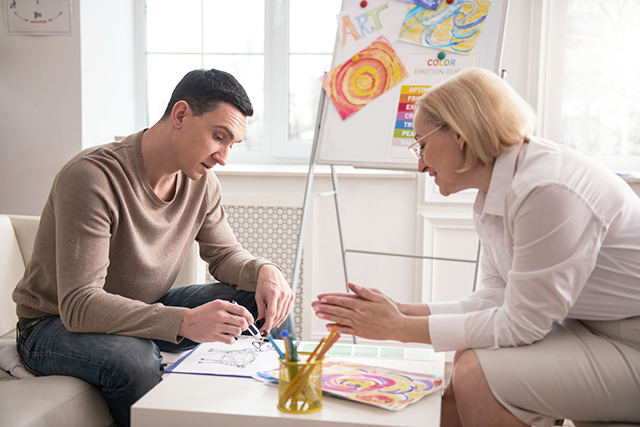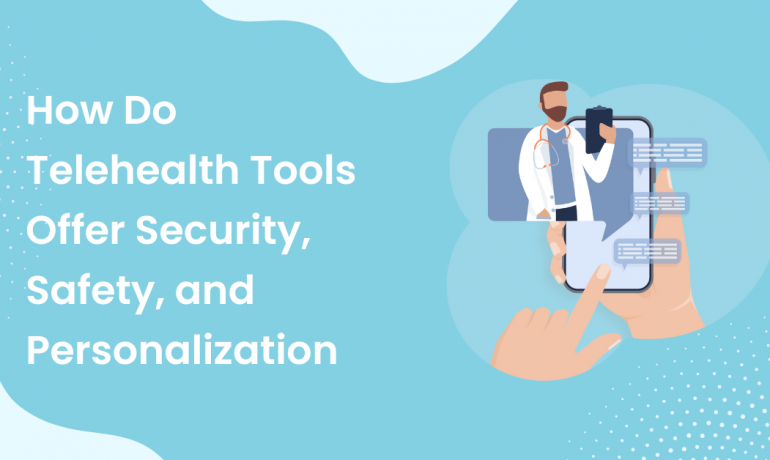It’s unlikely that most people have ever considered the idea of mixing art therapy with technology. However, this is currently a reality, with art therapy now being delivered via telehealth services. Naturally, this affects the experiences of both therapists and patients by providing benefits that normally would not be seen in in-person therapy.
How Does In-Person Art Therapy Work?
Art therapy is often used as an alternative to talk therapy and has been around for roughly eighty years. Contrary to popular belief, art therapists do not try to enhance their patients’ art skills, nor should all people with emotional issues consider art therapy. For some conditions, like schizophrenia, other treatments or types of therapy will produce better results. Now that we’ve addressed some of these concerns regarding art therapy, it is time to address what exactly art therapy does entail and who may benefit from it.
Before beginning art therapy, the patient must first take an assessment. This assessment is used in order to identify the patient’s needs that need to be addressed during art therapy. More specifically, patients may be dealing with psychological issues, medical issues, or interpersonal difficulties. This indicates that, depending on the patient’s specific problem, different techniques will need to be used in therapy in order to address it. However, the therapist does not simply decide on which techniques to use without the patient’s input. In fact, the patient’s input is very much valued in art therapy.

Of course, as the name of this type of therapy suggests, art is the main feature of art therapy. But does one’s patient need to be a world-class artist in order to benefit from art therapy? Not exactly. Art therapy is about expressing one’s emotions through making pieces of art.
What one must do as a therapist is pay close attention to the client during each session. More specifically, while or after the client works on an art piece, there must be a dialogue going on between the art therapist and the patient. What thoughts, emotions, and memories are coming to the patient’s mind? What is the client’s artistic process like as he or she works on his or her art project, whether it be a sculpture or a painting?
As you can see, art is a way to get your clients’ subconscious emotions to the forefront of their minds so that they can better discuss and work through what they are feeling. Art therapy is a calming way to get patients to make sense of the inner workings of their own minds, even if they were previously unable to. Art and other forms of creative expression are unique in their ability to fight stress. No matter what your clients have been going through, whether it be anxiety or trauma, art is a surefire way to help them.
What Is Online Art Therapy Like?
What are the major differences between in-person art therapy and online art therapy? For one, online art therapy has to be conducted in a virtual space, which means the therapist and patient must both become accustomed to using video conferencing for their sessions. Another factor is that therapists cannot read their patients’ body language via webcam. This makes it tougher to observe their feelings throughout the art therapy session. Patients will also not be able to easily access the art supplies in the therapist’s office if they are operating from home. They will need to either gather their own materials or stop by the office to pick up supplies. However, any perceived inconvenience involved in online therapy is nothing compared to the benefits that patients can experience from it.

The Benefits of Online Art Therapy
The biggest reason for how online art therapy works so well is because there are many benefits for both patients and therapists. For instance, where do you think your patients will feel more comfortable expressing their emotions - in your office or within their own homes? The latter, of course! Home is an environment where your patients can more easily relax and open up to you during your sessions. This is a benefit of online art therapy that actually makes it more effective than in-person art therapy. Patients who are immunocompromised will also not risk catching the coronavirus by attending an in-person therapy session. Therefore, online art therapy is beneficial for art therapy patients.
Working from home presents a multitude of benefits for you as the therapist as well. For example, less commute time means less wasted time and more time to yourself. You also are in an environment that you feel comfortable in during your working day. Other upsides include meeting and helping more patients, due to a lack of transitions between appointments. You will also be able to help patients who live further away from your practice and would rather not have to drive there for their appointments. These are excellent effects of online art therapy for art therapists.
Take a Chance on It
There is no doubt that online art therapy is more than worth it for art therapists and their patients. In this new digital world that we all find ourselves in, we are able to reap the benefits of working from home while also being able to help patients in a space that is comfortable for them - their own homes. Despite needing to adjust to using video conferencing platforms after becoming accustomed to going to the office in person for appointments, it is clear that any inconvenience posed by virtual art therapy is nothing in comparison to what both art therapists and their patients can gain from it.
Want to see how online art therapy works in action? Be sure to check out this insightful video in order to get an idea of how art therapy works in a virtual setting. In the video, the art therapist interacts with the client through a video conferencing platform on the computer. She also guides her through an art project and chats about how the client is coping emotionally. Notice how the therapist both asks questions and voices her observations aloud to the patient.





